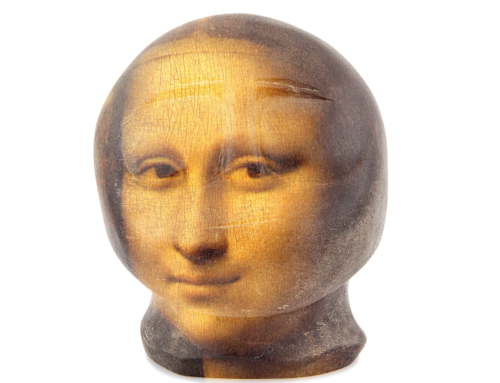In 1417, Poggio Bracciolini, the protagonist of Stephen Greenblatt’s remarkable book, The Swerve, discovered a poem, On the Nature of Things, written 1,500 years earlier by Titus Lucretius Carus (99 BCE – 55 BCE), who was virtually unknown. This poem is his only surviving work. One might think that Poggio’s discovery of a new author from antiquity would be a footnote in history, but its visionary ideas and magnificent writing made it highly influential after its discovery. I was intrigued by the relevance of The Swerve to the nature of creativity.
 First, the poem: Lucretius accepted the pagan Gods – he wasn’t an atheist in the modern sense. He believed that the Gods had no interest in humans and so there was no reason humans should be interested in them. He denied the existence of any creator or divine providence, which he considered fantasy, and limited the human world to what humans could perceive.
First, the poem: Lucretius accepted the pagan Gods – he wasn’t an atheist in the modern sense. He believed that the Gods had no interest in humans and so there was no reason humans should be interested in them. He denied the existence of any creator or divine providence, which he considered fantasy, and limited the human world to what humans could perceive.
But what then accounted for what was perceived? Atoms did, he said. Tiny invisible, indivisible, immutable, infinite in number and constantly moving “first things” – atoms – came together forming different shapes, split apart, came together again in different configurations, and so forth. Even vision was the result of atoms released from the objects and invisible until they struck the eye. (Today we know that the invisible atoms of Lucretius’s imagination are photons.) Whatever was seen, or even thought, resulted from the random collision of atoms. When they came together, it was creation, and when they split apart, it was destruction. The perceived world was dynamic: creation and destruction were always in equilibrium.
Oh, yes: the swerve. That was the minimal random motion of the atoms that prevented them traveling in parallel paths. Greenblatt quotes Lucretius, “At absolutely unpredictable times and places they deflect slightly from their straight course, to a degree that could be described as no more than a shift of movement.” Then Greenblatt notes, “The position of the elementary particles is thus indeterminate.” (This is not exactly the uncertainty principle of today’s physics, but it does resonate!)
Lucretius was not the first to think of atoms. Leucippus of Abdera preceded him in the fifth century BCE; his student Democritus adopted the idea, and Epicurus considered all observable bodies, from the sun to grains of sand, made of similar atoms. The fact that atoms and elementary particles have become such important parts of contemporary science was fluke, of course, since neither Lucretius nor his predecessors had any evidence for their speculations. It was pure imagination.
But here’s what I find interesting with respect to creativity. The recovery of Lucretius’s poem by Poggio stirred up questions in the Renaissance about religion and the nature of things. The recovery of speculations made in antiquity and dormant for over a thousand years influenced the future 1,500 years later. Lucretius’s ideas contributed to the intellectual foundation for innovation. Thus, although unfounded speculations, such as those of Lucretius, are “cheap” – mere words on paper (papyrus in the early days) – they become an indispensable part of future creativity: old roots feed new growth. The impact of creativity requires an existing structure of some kind – historical roots – that is enlarged or modified or even destroyed.
Would any discovery be recognized as a discovery without historical relevance? Would impressionism have had impact if it didn’t follow realism in art? Would the discovery of genes as interrupted DNA sequences have had the same impact in the absence of the rich history of speculation and earlier experiments of what a gene might be?
I felt the heavy weight of the past as I was reading my first edition of Darwin’s Origin of Species (lucky me to have acquired this treasure as a teenager!) as I was writing a book (Gene Sharing and Evolution) on my research on gene expression in the eye. Darwin and many others provided compelling evidence that evolution works by incremental changes on existing structures, while our work established that radical substitutions of major proteins also had a role in evolution. The findings that entirely different proteins could confer similar optical properties to the lens of different species gained significance by modifying the historically accepted concept of evolution being limited to incremental modifications over time.
History and speculations – some correct and others not – contribute to creative advances. We are left with the paradox that moving ahead requires looking back.






Leave A Comment